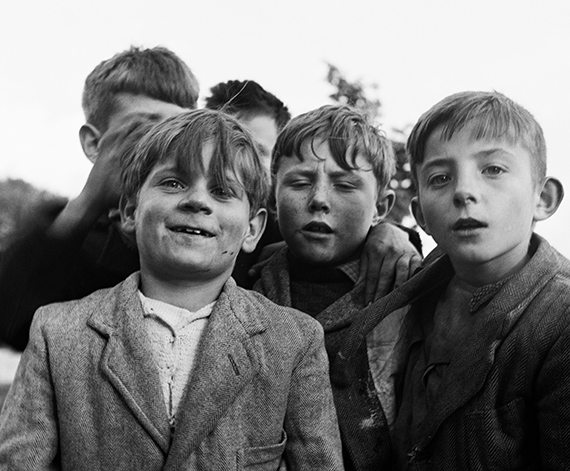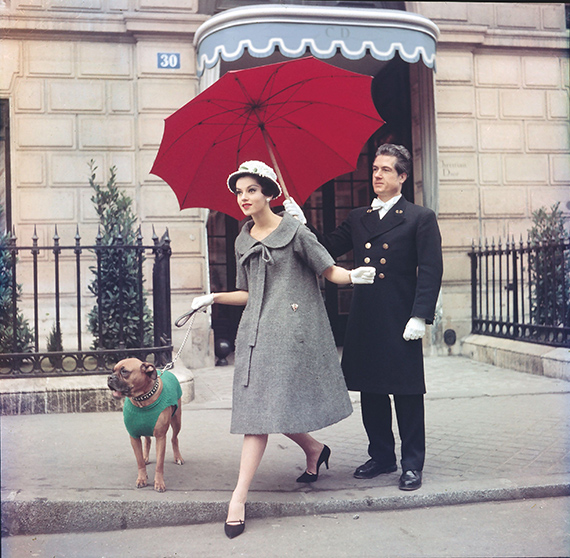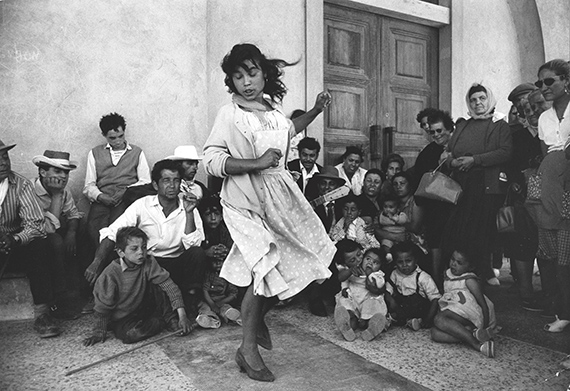
Sabine Weiss »
La poésie de l'instant
Exhibition: 11 Mar – 23 Oct 2022

Casa dei Tre Oci
Fondamenta delle Zitelle 43
30133 Venezia
+39 041-2412332
info@treoci.org
www.treoci.org/
Mon, Wed-Sun 10-19

"When [Sabine Weiss] photographs children, she becomes a child herself.
There is absolutely no barrier between her, them, and the camera."
Hugh Weiss, artist and husband of Sabine Weiss
The Casa dei Tre Oci in Venice presents, from March 11 to October 23, 2022, the largest retrospective ever held – and the first in Italy - dedicated to the Franco-Swiss photographer Sabine Weiss, who passed away at the age of 97 at her home in Paris on 28 December 2021, one of the greatest representatives of French humanist photography along with Robert Doisneau, Willy Ronis, Edouard Boubat, Brassaï, and Izis.
The exhibition is the first and most important tribute to her career, with over 200 photographs. Curated by Virginie Chardin, the retrospective is sponsored by the Fondazione di Venezia, realized by Marsilio Arte in collaboration with the Berggruen Institute, and produced by the Sabine Weiss studio in Paris and Laure Delloye-Augustins, with the support of the Jeu de Paume and the International Festival Les Rencontres de la photographie d'Arles.
The only woman photographer of the postwar era to have practiced this profession for such a long time and in every photographic genre - from reportage, artists' portraits, and fashion to ‘street’ photography, with particular attention to children's faces and her extensive travels around the world, Sabine Weiss, who was able to actively participate in the construction of this exhibition, had opened her personal archives in Paris to tell her extraordinary story and present her work for the first time in a comprehensive and structured way.
The shots exhibited at the Tre Oci
retrace, along with various publications and magazines of the time, Weiss's entire career, from her beginnings in 1935 to the 1980s. From the outset, as the photographs of children and passersby in the exhibition testify, Weiss directed her lens on bodies and gestures, immortalizing emotions and feelings, in the spirit of French humanist photography, an approach from which she would never deviate, as can be seen from her words:
"To be powerful, a photograph must speak to us about an aspect of the human condition, make us feel the emotion that the photographer felt in the presence of her subject".

Born Sabine Weber in Saint-Gingolph, Switzerland, on 23 July 1924, later taking the surname of her husband, the American painter Hugh Weiss (Philadelphia, 1925 - Paris, 2007), she approached photography at an early age. She completed her apprenticeship with the Boissonnas, a dynasty of photographers who had been working in Geneva since the end of the 19th century. In 1946, she left Geneva for Paris and became the assistant of Willy Maywald, a German photographer specializing in fashion and portraits. When she married Hugh in 1950, she embarked on a career as an independent photographer. Together, they moved into a small Parisian studio, where Weiss still lives, and frequented the postwar art milieu.
One of the core groups of works in the exhibition Sabine Weiss. The Poetry of the Instant tells the story of the 1950s, the period in which the photographer gained international recognition. In 1952, her career took a decisive turn when she joined the Rapho agency on the recommendation of Robert Doisneau. From 1953 onwards, her photographs were published by major international dailies and magazines including Picture Post, ParisMatch, Vogue, LeOre, TheNewYorkTimes, Life, and Newsweek. In that same year, Weiss participated in the exhibition Post War European Photography at the Museum of Modern Art in New York (MoMA), and in 1954 the Art Institute of Chicago dedicated an important solo exhibition to her work. In 1955 Edward Steichen chose three of her shots for the historic anthological exhibition The Family of Man at the MoMA.
From 1952 to 1961, Weiss collaborated with photographers such as William Klein, Henry Clarke, and Guy Bourdin, producing some memorable fashion shoots for Vogue, from which the exhibition displays several vivid color prints along with 15 original issues of the legendary magazine.
A section of the exhibition is dedicated to her portraits of painters, sculptors, actors, and musicians. For five years, Hugh Weiss mentored the artist Niki de Saint Phalle, whereas Sabine was close to Annette Giacometti, wife of the great sculptor Alberto. The exhibition features their portraits alongside those of other personalities such as Robert Rauschenberg, Françoise Sagan, Romy Schneider, Ella Fitzgerald, Simone Signoret, and Brigitte Bardot.
A voyage to America in 1955 aboard the ocean liner Liberté in the company of her husband Hugh made a strong impression on her, and the shots taken in the streets of New York, teeming with details, from the Bronx and Harlem to Chinatown and Ninth Avenue, were published in The New York Times in a major spread entitled "A Parisienne’s New Yorkers”. The images tell the story of America from a French point of view, with a marked sense of humor, many of which are exhibited for the first time in Italy,
on the occasion of the retrospective at the Tre Oci.
The exhibition also reserves ample space for works created in the 1980s, when the artist was in her sixties, during her travels to Portugal, India, Myanmar, Bulgaria, and Egypt.
As the curator Virginie Chardin observes, "These works have an extraordinary intellectual with an occasional sentimental note, centered on solitude, faith, and moments of reflection on the nature of existence".
In addition to photographs, the exhibition will also feature excerpts from documentary films dedicated to Weiss (La Chambre Noire of 1965; Sabine Weiss of 2005; My work as photographer of 2014) in which the photographer recounts, in different periods of her life, her artistic journey, her travel experiences, and the difficulty of being a female photographer.
The strength of her curiosity for the world and her joy of seeing and documenting it make Sabine Weiss a symbol of courage and freedom for all women photographers.